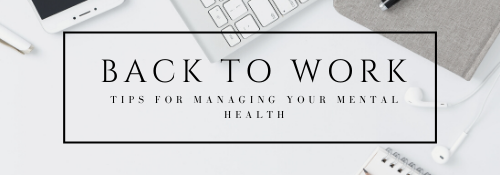
As social distancing restrictions begin to lift around our community, many of us will experience a wide range of emotions about the change in routine. It may seem odd that returning to “normal” could elicit uncomfortable emotions, but after almost 10 weeks sheltering in place, with just your immediate household for companionship, the change of pace may not feel as welcoming as you expected. One benefit we get from a slow reopening process is that we can slowly ease back into a slightly changed version of the “old” routine. First, your feelings are valid, all of them. You may feel:
- Relief that you can return to a somewhat “normal” routine.
- Fear or worry about loosening restrictions too early or quickly.
- Stressed from the impact COVID-19 had on you personally.
- Guilt about spending more time away from your children or other significant people in your home.
- Excitement that you can see your friends and family again.
- Saddened at the loss of the new routine you came to enjoy.
- Anxious to get into the office and stop ZOOMing every interaction.
Whatever feelings you identify with, your reaction is normal, because there is no “right” way to feel during a pandemic. There are a few tips and tools you can use to reduce any negative or uncomfortable feelings as routines begin to shift again.
- Give yourself grace. It likely took you a week (or four) to get used to your Stay Home routine. Routines take time to become comfortable. Go into this next phase with the understanding it might not feel “normal” for a while.
- Manage expectations. This goes along with the first tip; familiarizing yourself with the precautions your work and/or community is taking may help you know what to expect when you leave the house. Things are likely to look different than how you left them.
- Practice mindfulness. Using meditation or mindfulness to reconnect with your emotions and experiences can help connect you with any uncomfortable emotions and bring a sense of calm.
- Go at your own pace. You may be completely comfortable reentering the workplace and going back out in public. If so, great! Visit your friends, go out to eat, just be mindful to keep good hygiene, wear your mask, and use distancing while in public. If the thought of exiting your house gives you anxiety, then take it slow. Go somewhere that requires minimal interaction to start, and don’t pressure yourself to jump in head first.
- Keep some routines the same. If you started a self-care routine that you enjoyed while at home, keep it going! It can be easy to slip into a busier routine and forget about self-care, but aside from the benefits of time for yourself, keeping some routines the same can ease the stress change often brings.
- Ask for help. If you’re having difficulty adjusting or need more time to take it more slowly, talk to your supervisor about your concerns and see if you can work together on a plan that helps you navigate this time of transition.
